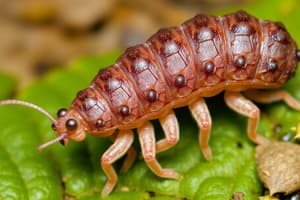Podcast
Questions and Answers
What is a predator-prey relationship, and how does it affect the populations of the species involved?
What is a predator-prey relationship, and how does it affect the populations of the species involved?
A predator-prey relationship is an interaction between two species where one species hunts and feeds on the other. This relationship affects the populations of the species involved, with the predator population increasing when the prey is abundant and decreasing when the prey is scarce.
Who developed the Lotka-Volterra models, and what do these models describe?
Who developed the Lotka-Volterra models, and what do these models describe?
The Lotka-Volterra models were developed by Alfred J. Lotka and Vito Volterra in the 1920s. These models describe the dynamics of predator-prey relationships using a system of two differential equations that describe the changes in predator and prey populations over time.
What do the variables x and y represent in the Lotka-Volterra equations?
What do the variables x and y represent in the Lotka-Volterra equations?
In the Lotka-Volterra equations, x represents the prey population, and y represents the predator population.
What is a characteristic of the Lotka-Volterra models, and what does it imply about the populations of the species involved?
What is a characteristic of the Lotka-Volterra models, and what does it imply about the populations of the species involved?
Provide an example of a predator-prey relationship in a terrestrial ecosystem, and describe how it affects the ecosystem.
Provide an example of a predator-prey relationship in a terrestrial ecosystem, and describe how it affects the ecosystem.
What is the effect of changing the initial conditions of the Lotka-Volterra models, and what does it imply about the sensitivity of the models?
What is the effect of changing the initial conditions of the Lotka-Volterra models, and what does it imply about the sensitivity of the models?
Flashcards are hidden until you start studying
Study Notes
Predator-Prey Relationships
- A predator-prey relationship is an interaction between two species where one species (the predator) hunts and feeds on the other species (the prey).
Lotka-Volterra Models
- Developed by Alfred J. Lotka and Vito Volterra in the 1920s
- Mathematical models that describe the dynamics of predator-prey relationships
- The models consist of a system of two differential equations that describe the changes in predator and prey populations over time
Lotka-Volterra Equations
- dx/dt = ax - bxy (prey population growth rate)
- dy/dt = -cy + dxy (predator population growth rate)
- x = prey population
- y = predator population
- a, b, c, and d are constants that represent the interaction between the species
Characteristics of Lotka-Volterra Models
- Oscillating populations: predator and prey populations oscillate around a stable equilibrium point
- Predator-prey cycles: predator population increases when prey is abundant, and decreases when prey is scarce
- Sensitive to initial conditions: small changes in initial population sizes can lead to drastically different outcomes
Examples of Predator-Prey Relationships
- Wolves and deer in Yellowstone National Park
- Wolves prey on deer, regulating the deer population and maintaining a balanced ecosystem
- Ladybugs and aphids in gardens
- Ladybugs feed on aphids, controlling their population and preventing damage to crops
- Sharks and fish in marine ecosystems
- Sharks prey on fish, maintaining a balanced food web and ecosystem structure
Studying That Suits You
Use AI to generate personalized quizzes and flashcards to suit your learning preferences.



